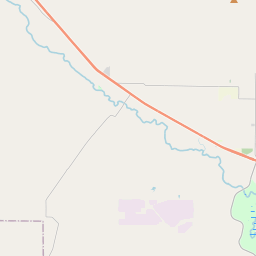Sheep and Goat Industry in Texas
Historical marker location:






Spanish explorers introduced sheep to the Soutwest in the 1500s, and Spanish missions depended on the animals for food and clothing. The first Angora goats, known for the beauty and strength of their mohair, were brought to Texas in 1853 by Col. W. W. Haupt. Pioneer of modern sheep ranching in Texas from 1857 to 1867 was George Wilkins Kendall, who encouraged others with glowing reports of the industry's future while improving his own flocks. Kendall was one of the first to crossbreed the coarse--wooled Mexican churro sheep with the fine-wooled merino variety brought by European settlers.
The land, climate, and vegetation of the Edwards Plateau area especially suited the raising of sheep and goats. After 1870, with new markets and abundant land, the industry boomed. Ranchers fought disease, predators, deadly plants, and drouths to build their flocks. Today Texas is the leading producer of sheep and goats in the nation, and San Angelo is the major market center for these animals and their wool. Research facilities such as the San Angelo Research and Extension Center, built in 1969 through the efforts of Gen. Earl Rudder, then president of the Texas A&M System, work for the industry's continued prosperity. (1974)
As one of the most visible programs of the Texas Historical Commission (THC), historical markers commemorate diverse topics in Texas history, including: the history and architecture of houses, commercial and public buildings, religious congregations, and military sites; events that changed the course of local and state history; and individuals who have made lasting contributions to the state, community organizations, and businesses.
Texas is known for its barbecue, and one of the most famous barbecue restaurants in the state is Kreuz Market in Lockhart. The restaurant has been in operation since 1900 and is still family-owned.
In the late 1800s, the county began to attract settlers looking for opportunities in ranching and agriculture. This period saw an influx of farmers and ranchers who developed the land for cattle and sheep grazing, as well as growing crops such as cotton, corn, and wheat. The population increased significantly during this time, leading to the official organization of Tom Green County in 1874.
The county experienced rapid growth during the late 19th century, thanks to the establishment of Fort Concho and the expansion of the railroad. Fort Concho served as a primary military post protecting settlements against Native American raids and fostered economic growth by providing stability and resources to the region. Additionally, the arrival of the railroad in the 1880s further spurred economic development, making transportation of goods easier and stimulating trade.
In the early 20th century, Tom Green County faced several challenges, including droughts and the Great Depression. However, the county managed to overcome these obstacles and continued to thrive. Today, Tom Green County is known for its agriculture, oil and gas production, and as a center for healthcare and education. With a rich history that encompasses Native American heritage, frontier life, military significance, and economic growth, Tom Green County has played a vital role in the development of West Texas.
Tom Green County Timeline
This timeline provides a concise overview of the key events in the history of Tom Green County, Texas.
- 1874 - Tom Green County is organized and named after Confederate General Thomas Green.
- 1882 - The first courthouse in Tom Green County is built in the city of Ben Ficklin.
- 1884 - San Angelo becomes the county seat after a contentious election.
- 1886 - The Texas and Pacific Railway line is extended to San Angelo, boosting the city's economy.
- 1899 - San Angelo is incorporated as a city.
- 1928 - Goodfellow Air Force Base is established as a training facility during World War II.
- 1952 - Construction of the O.H. Ivie Reservoir begins on the Colorado River near San Angelo.
- 1995 - The San Angelo Museum of Fine Arts opens.
- 2002 - San Angelo experiences a devastating flood, causing significant damage to the city.
- 2015 - The San Angelo Stock Show and Rodeo celebrates its 83rd anniversary.